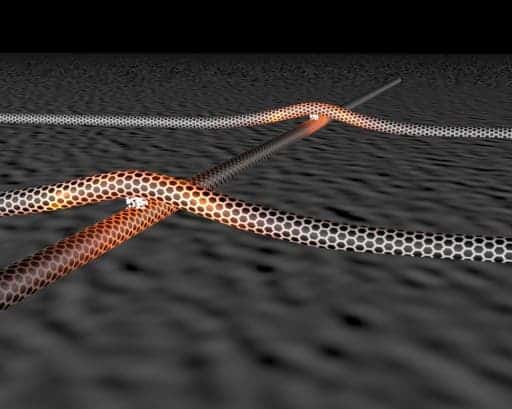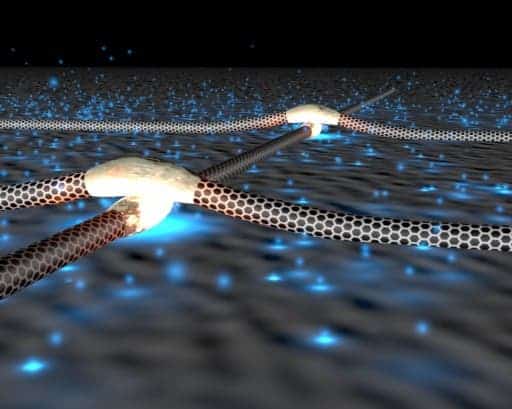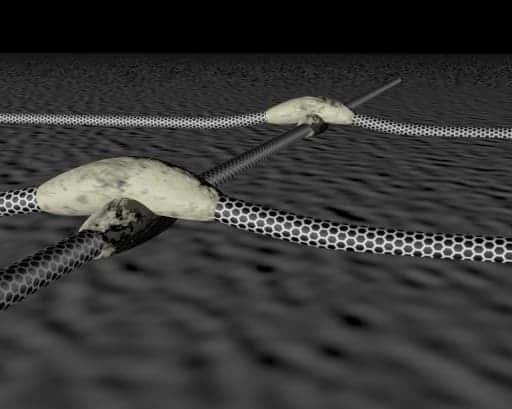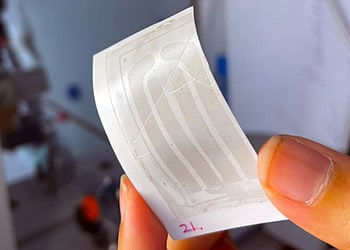Carbon nanotubes and graphene have been hailed time and again as the wonder materials that will change the face of technology in the future. Before silicon can be dethroned from its reigning position, however, a lot of manufacturing issues need to be addressed. A new technique developed by researchers at University of Illinois provides a simple and straight-forward way of soldering carbon nanotubes together, that is consistent with current manufacturing technologies and thus inexpensive. The method basically allows researchers to arrange carbon nanotubes for use as transistors where they could be embedded into thin sheets of plastic or flat-panel displays and effectively allow highly flexible electronics to be made, where silicon is currently unsuited for.
Carbon nanotubes, as the name implies, are extremely thin tube-shaped materials, made of carbon, having a diameter measuring on the nanometer scale. A nanometer is one-billionth of a meter, or about one ten-thousandth of the thickness of a human hair. The graphite layer appears somewhat like a rolled-up chicken wire with a continuous unbroken hexagonal mesh and carbon molecules at the apexes of the hexagons. Carbon nanotubes are extremely sought after because of their amazing properties. For instance you can construct them with length-to-diameter ratio of up to 132,000,000:1! Where they truly sparkle, however, is in their fantastic electrical conductivity properties, so naturally they’re seen as great contenders for the material that will dominate the technological age of tomorrow.
To make transistors out of carbon nanotubes is very difficult as of now, unfortunately. In an array of nanotubes, to make transistors, you need to slow down or stop the current altogether at junctions. In a standard circuit, the connecting wires are soldered together, but with nanotubes we’re talking on an extremely minuscule scale. Not even the tinniest soldering iron in the world could help you out. When there’s a will, there’s a way, though – you just need to think outside the box.
[ALSO READ] First computer made out of carbon nanotubes spells silicon demise in electronics
Joseph Lyding, a professor of electrical and computing engineering at University of Illinois, along with colleagues have found one such way of soldering carbon nanotubes. Though carbon nanotubes have amazing electrical conductivity properties, that doesn’t mean that they’re superconductive too. As current passes through them, some of that energy is lost as heat which causes a temperature gradient in their vicinity. In a stroke of ingenuity, the researchers controlled chemical reactions that occur at certain temperatures to happen only in certain hot spots. This caused tiny amounts of metal to deposit in this spots – just enough to solder nanotube junctions. The technique is called CVD [chemical vapor deposition] and is currently widely used by most major manufacturing companies. This means that, if they wish it in the future, they can integrate this process with existing technology dramatically cutting the huge costs that are associated with replacing infrastructure.
“Other methods have been developed to address the nanotube junction resistance problem, but they are generally top-down and quite slow,” Lyding said. “Our method is self-aligned and self-limiting and is therefore easily implemented.”
Here’s an illustrated view of the carbon nanotube self-soldering process, which only lasts a few seconds but improves device performance by a whole order of magnitude.
Step 1

Step 2

Step 3

The findings were reported in the journal Nano Letters.






